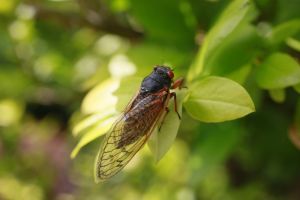
Source: Photo by Jeremy_Hogan/Getty Images
STATEWIDE — Hoosiers in northwest and southwest Indiana can expect one of two broods to emerge in their county this summer. Brood 13 will be located in the northwest from Merrillville to South Bend, while Brood 19 is going to extend from Terre Haute to Evansville.
WIBC’s Kendall and Casey spoke with Dr. Elizabeth Long, Assistant Professor of Entomology at Purdue University, about when we can expect to see the insects this summer.
“They will probably start emerging the last part of May or so, into the beginning of June. Then we’re really going to see an increase in their emergence. Kind of like a bell-shaped curve. Then you’ll see things start to taper off again.” said Long.
Long would add that cicadas do not hurt humans or pets but can be dangerous to young plants and shrubs in the area.
“The real concern is maybe for folks who have a landscaping business, vineyard, or a nursery. Any kind of younger, woody shrubs. That have a thin branch diameter between 3/16 to 7/16 of an inch. Those plants are specifically vulnerable to females.”
The female cicada will often target these types of plants to lay their eggs. That process involves stabbing into the branch which can cause significant damage. Long says that putting netting over the plants can help to protect them while the cicadas are above ground.
The insects should be around for roughly a month. The next periodical brood expected in Indiana is brood X which is expected to emerge in 2038 and will encompass most of the state.












